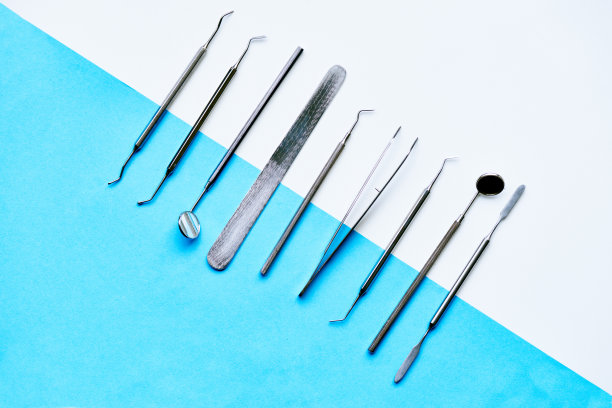Revolutionizing Smiles Through Advanced Dental Implant Treatment Options for Improved Oral Health and Aesthetics
Summary: In todays rapidly evolving dental landscape, advanced dental implant treatments are transforming the way we approach oral health and aesthetics. This article explores how revolutionary implant technologies not only restore functionality but also enhance the beauty of smiles. We will delve into the innovative techniques, materials, patient-centered care, and long-term benefits of these treatments, showcasing their vital role in improving both health and appearance. The advancement in dental implants offers patients the opportunity to regain confidence, functionality, and overall oral well-being.
1. Innovative Techniques in Dental Implantology

Recent advancements in dental implantology have introduced cutting-edge techniques that significantly improve patient outcomes. One such technique is the use of computer-guided implant surgery, which allows for precise placement of implants. By leveraging 3D imaging and digital planning, dental professionals can ensure that implants are positioned optimally, leading to better integration with the jawbone and a higher success rate.
Another innovative method gaining traction is immediate loading implants, which enables patients to receive a functional tooth on the same day as the implant placement. This approach minimizes the gaps in time without teeth, allowing for immediate aesthetics and enhanced patient satisfaction. Such techniques are especially beneficial for those who are eager to restore their smiles quickly without compromising quality.
Moreover, advancements in minimally invasive surgery techniques provide patients with less discomfort and quicker recovery times. By utilizing smaller incisions and advanced tools, these procedures reduce trauma to the surrounding tissues, leading to less swelling and faster healing. Overall, these innovative techniques are pivotal in revolutionizing the dental implant experience.
2. Advanced Materials for Better Results
The development of advanced materials is another key factor driving the evolution of dental implants. Traditionally, titanium has been the material of choice, but new options such as zirconia are now making waves in the industry. Zirconia implants offer a tooth-colored alternative that can blend seamlessly with the natural teeth, making them an aesthetic option for many patients.
In addition to aesthetic advantages, these new materials exhibit enhanced biocompatibility. This means that they are less likely to cause adverse reactions in the body, which can improve integration and long-term success rates. The introduction of these advanced materials allows dental professionals to customize treatments based on each patient’s unique aesthetic and health needs.
Furthermore, innovative surface treatments for these materials promote better osseointegration, meaning that the implants fuse more effectively with the jawbone. This process is crucial for the stability and longevity of the implant, giving patients peace of mind about their investment in dental health.
3. Patient-Centered Care in Implant Treatment
Revolutionizing smiles is not only about technology; it’s about the patient experience as well. Modern dental practices are increasingly focusing on patient-centered care, prioritizing the needs and preferences of individuals seeking dental implant treatments. This approach includes thorough consultations where patients can express their concerns and desires regarding treatment outcomes.
Dentists are now offering comprehensive treatment plans that incorporate patient’s feedback, helping tailor solutions that align with their lifestyles. For instance, some patients may prefer sedation options to alleviate anxiety during procedures, and practices are accommodating these needs with various sedation technologies.
Furthermore, education plays a critical role in patient-centered care. Dental teams are investing time in educating patients about the benefits and processes involved in dental implant procedures. Understanding what to expect can alleviate fears, leading to more informed choices and better compliance with post-treatment care instructions, ultimately enhancing satisfaction.
4. Long-Term Benefits of Dental Implants
The long-term benefits of dental implants extend far beyond immediate aesthetics. One of the most significant advantages is the preservation of jawbone health. After tooth loss, the jawbone can deteriorate over time; however, implants stimulate the bone much like natural tooth roots, helping to maintain its structure and integrity.
Additionally, dental implants can significantly improve oral function. Unlike dentures, which may slip and cause discomfort, implants are securely attached, allowing for normal eating and speaking. This can enhance a patient’s quality of life, enabling them to enjoy their favorite foods without fear of embarrassment.
Finally, the durability of dental implants makes them an excellent long-term investment in oral health. With proper care, they can last a lifetime, minimizing the need for replacements or further treatments. This value proposition makes dental implants an appealing option for those seeking sustainable solutions for tooth loss.
Summary:
As we have explored, advanced dental implants revolutionize the way we approach both oral health and aesthetics. From innovative techniques and advanced materials to a focus on patient-centered care and long-term benefits, these treatments enhance lives and restore confidence. The combination of these aspects underscores the vital role of dental implants in modern dentistry, contributing to happier, healthier smiles.
This article is compiled by Vickong Dental and the content is for reference only.



